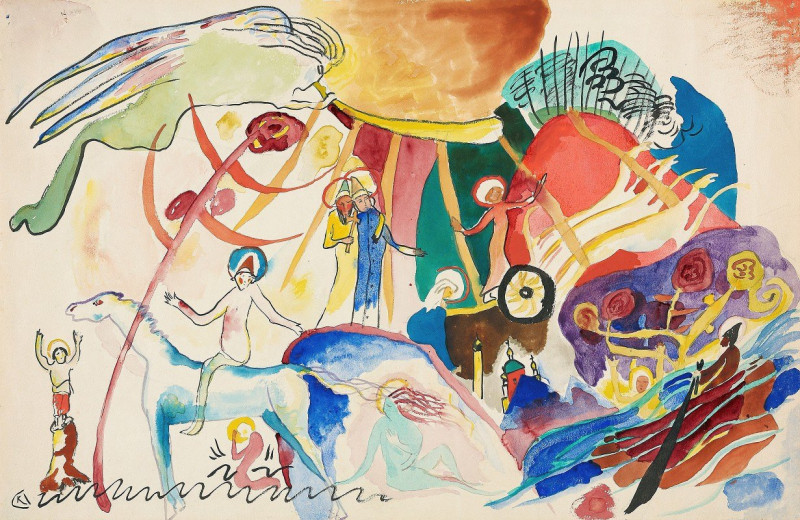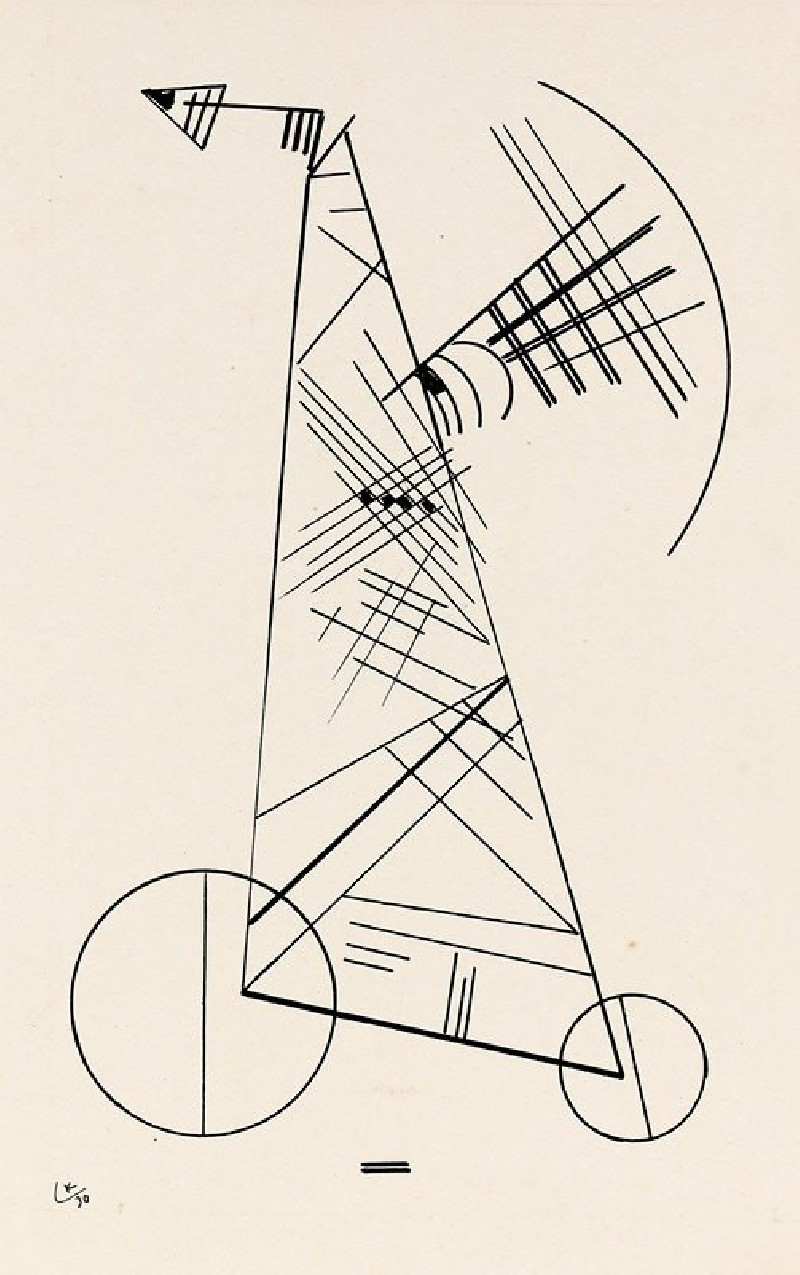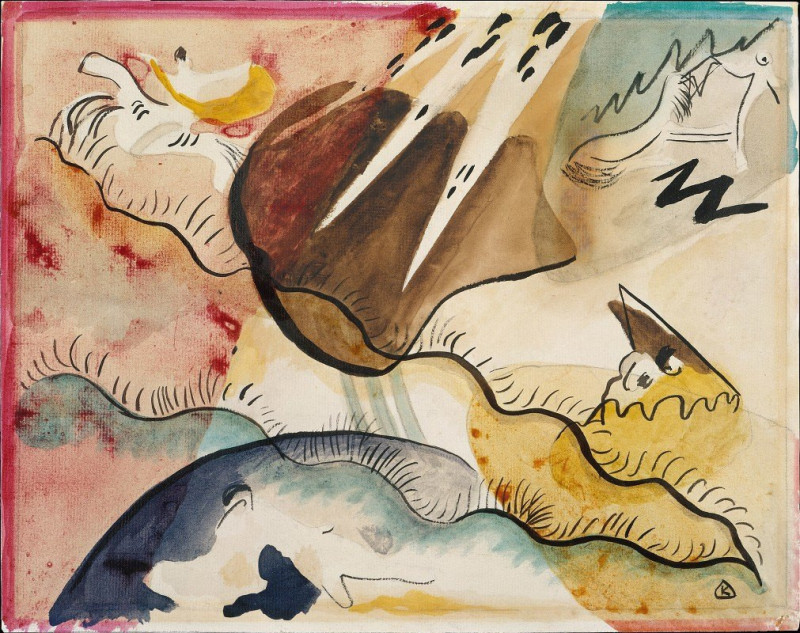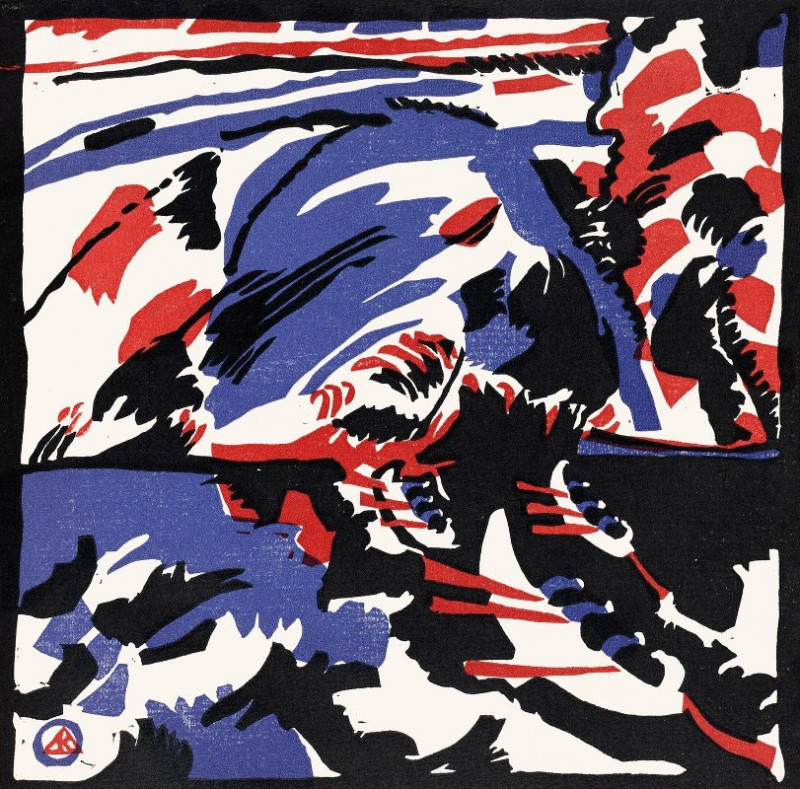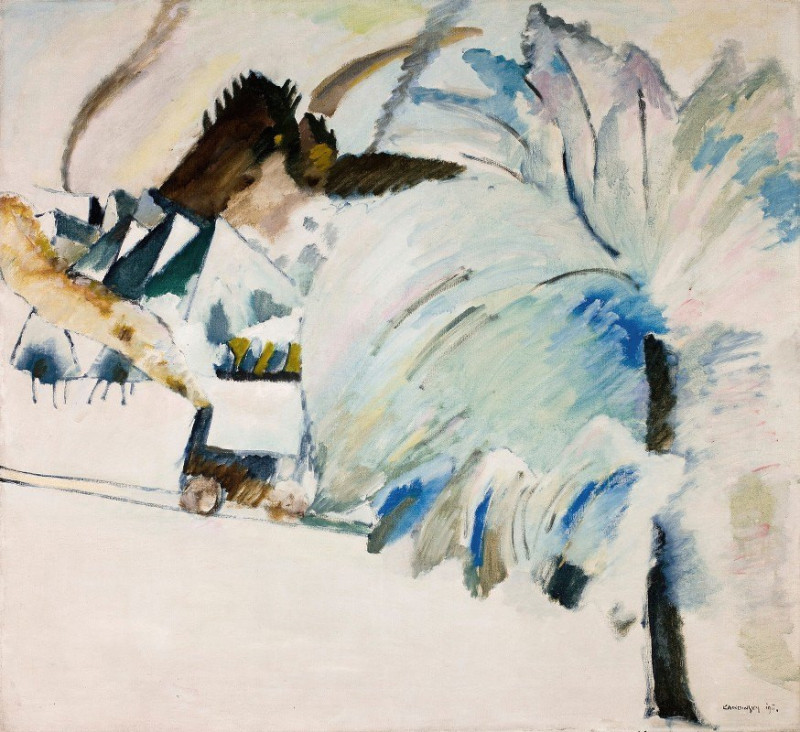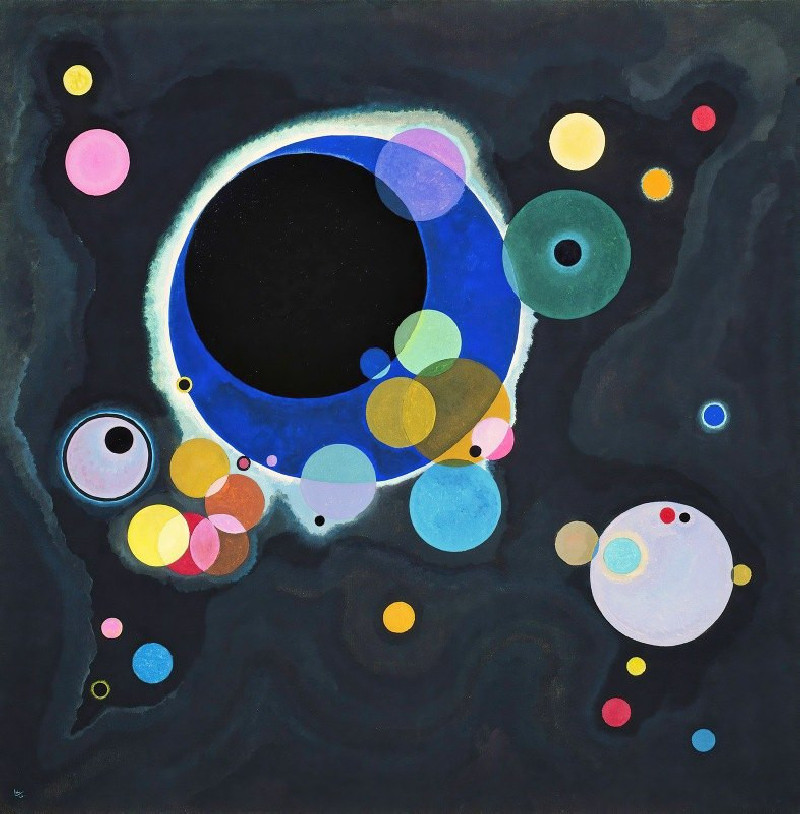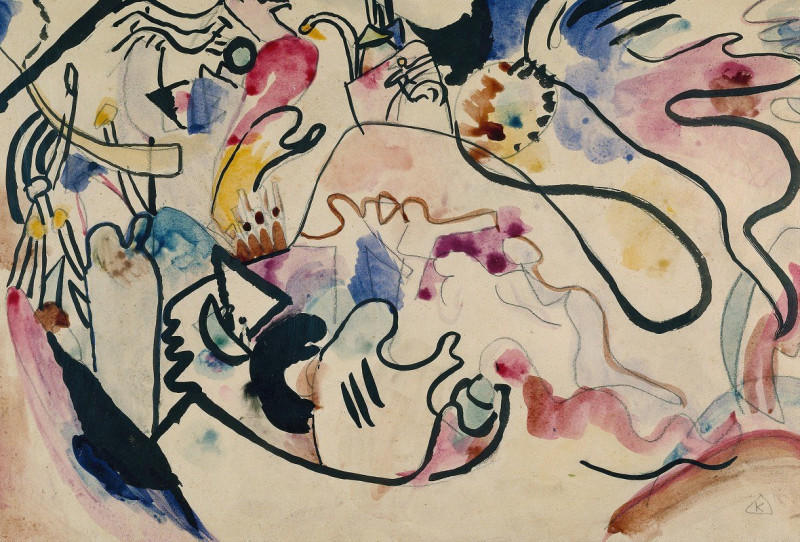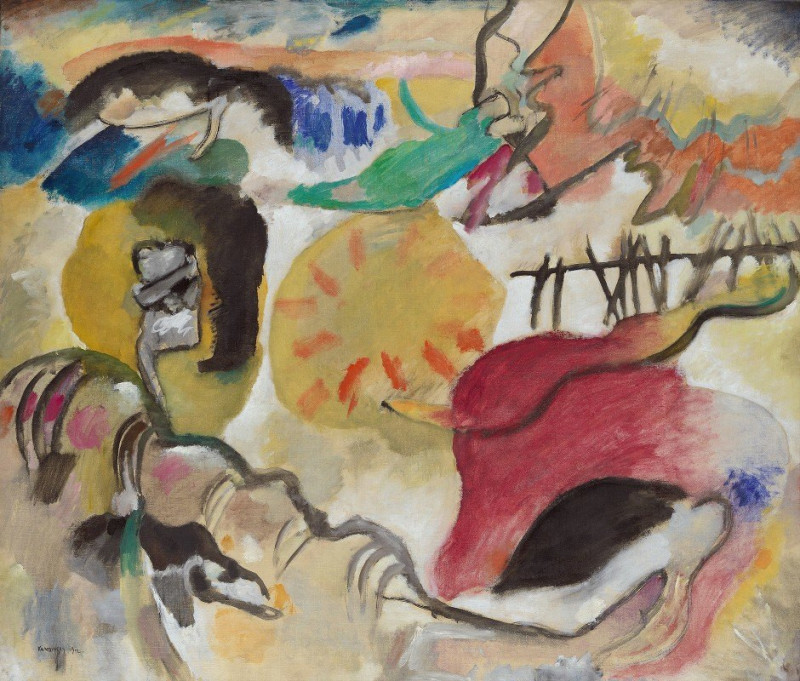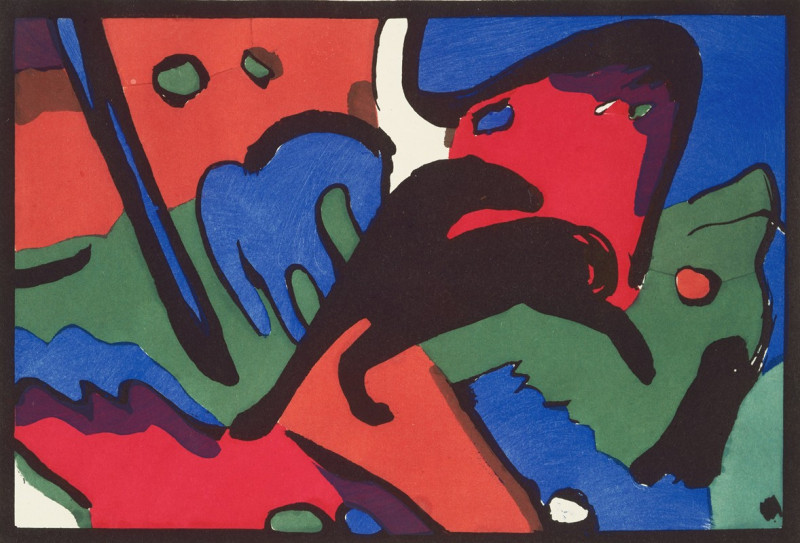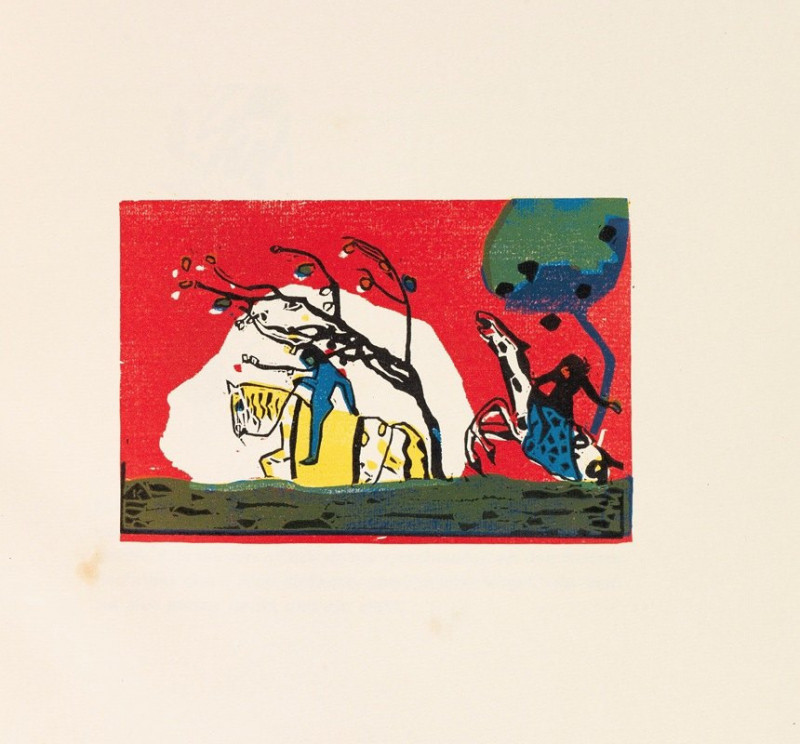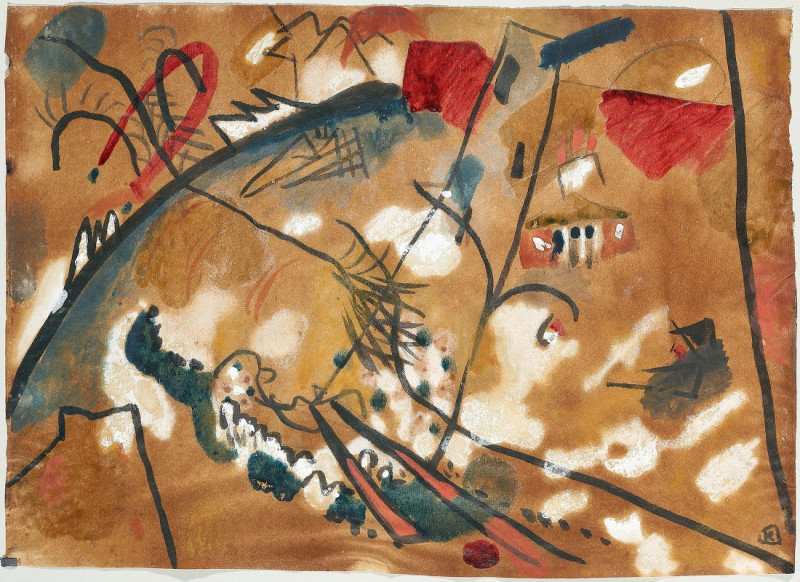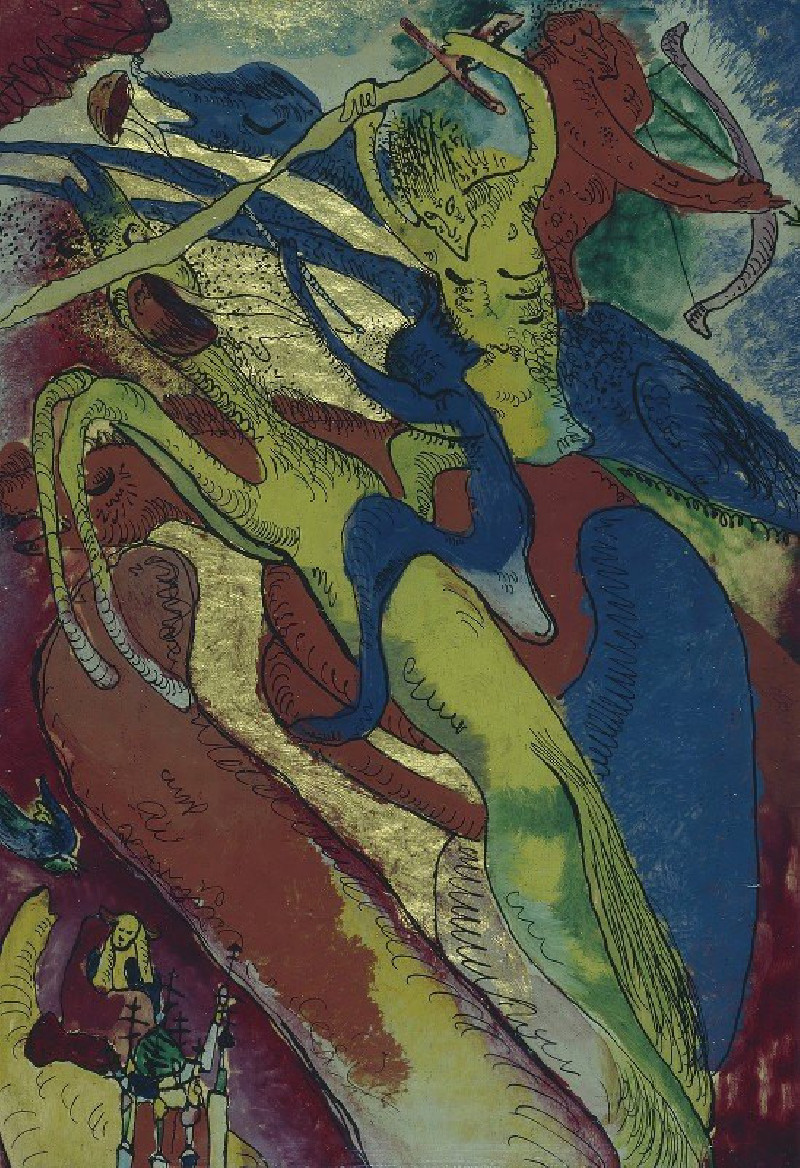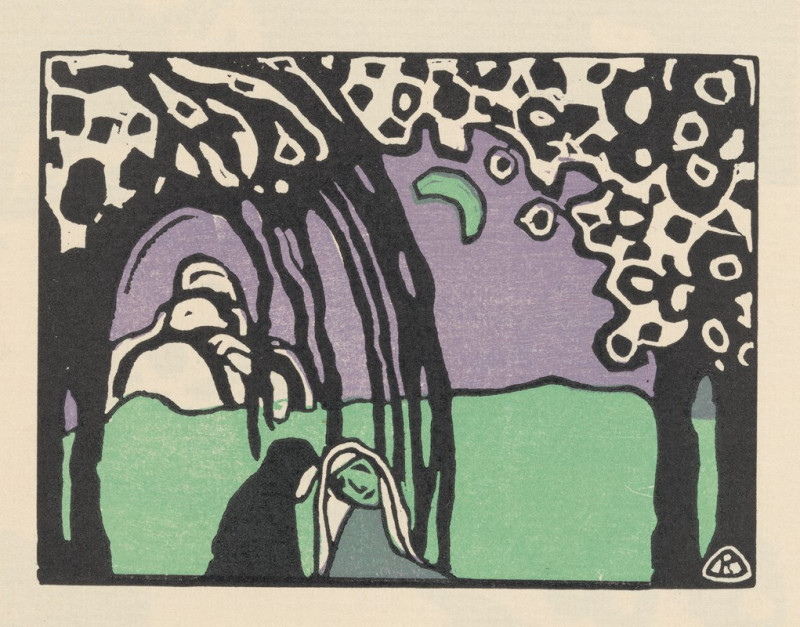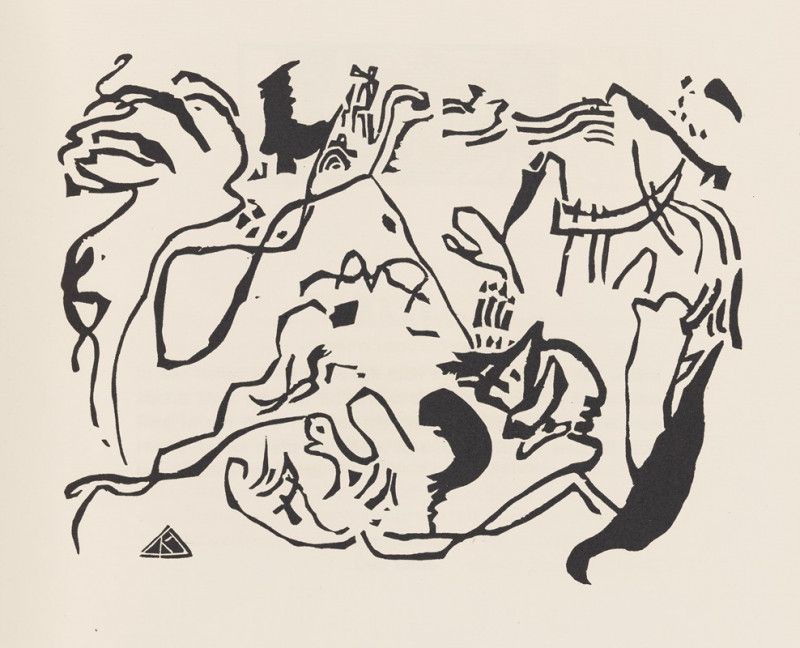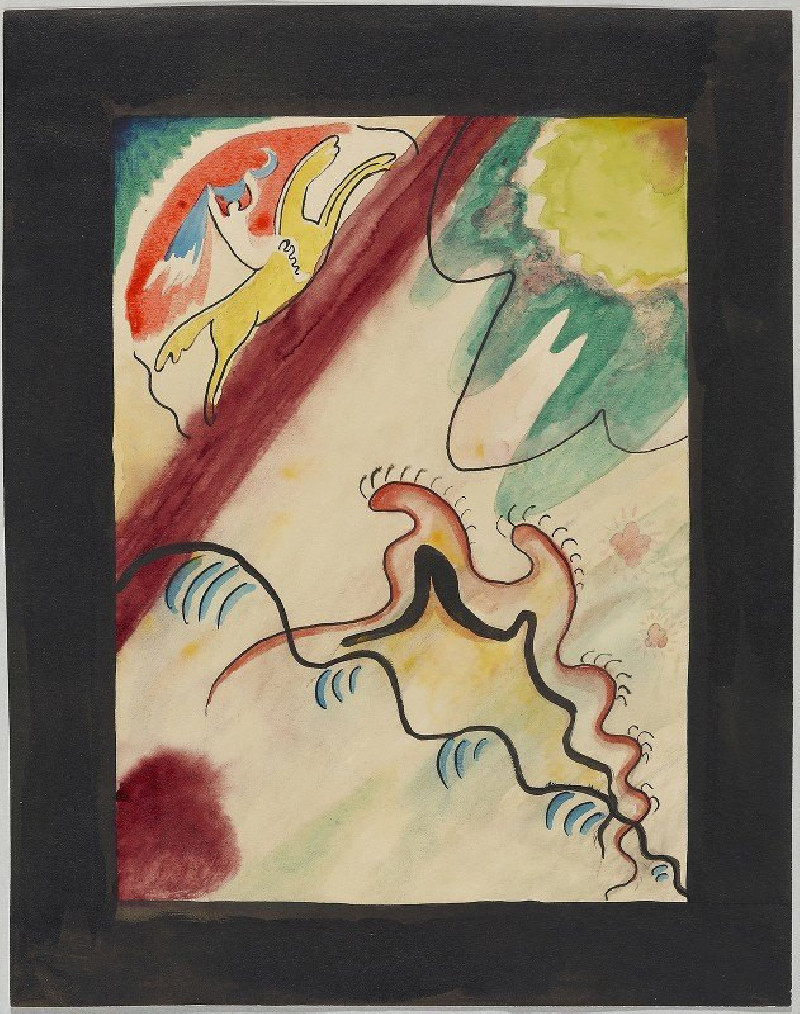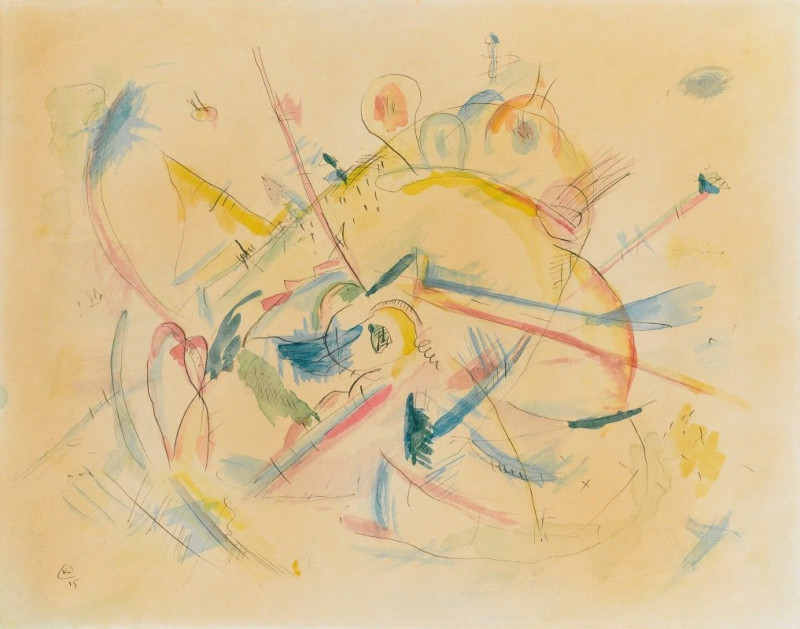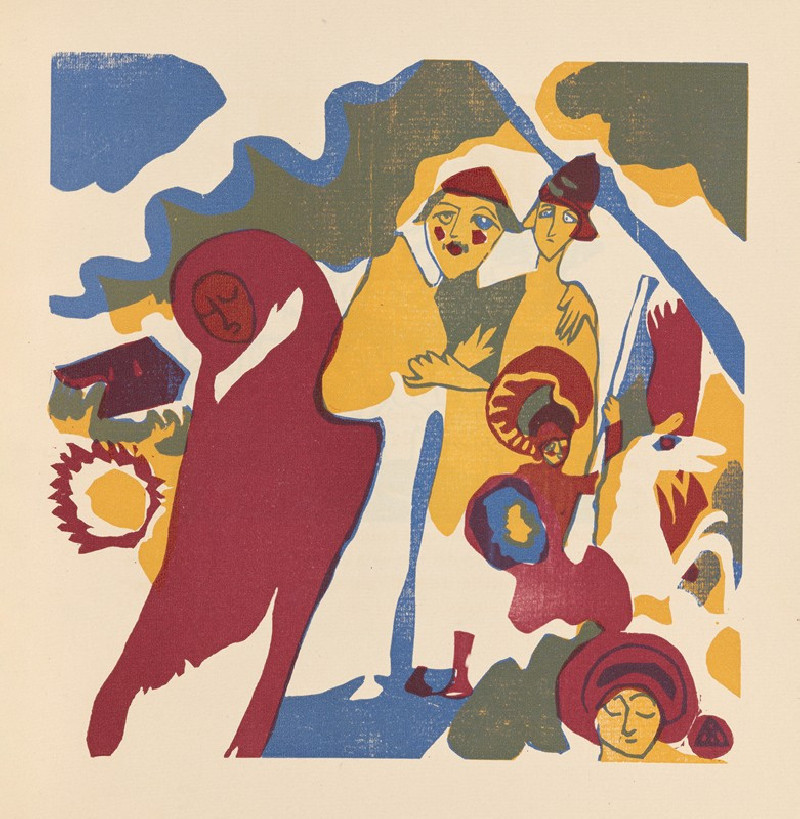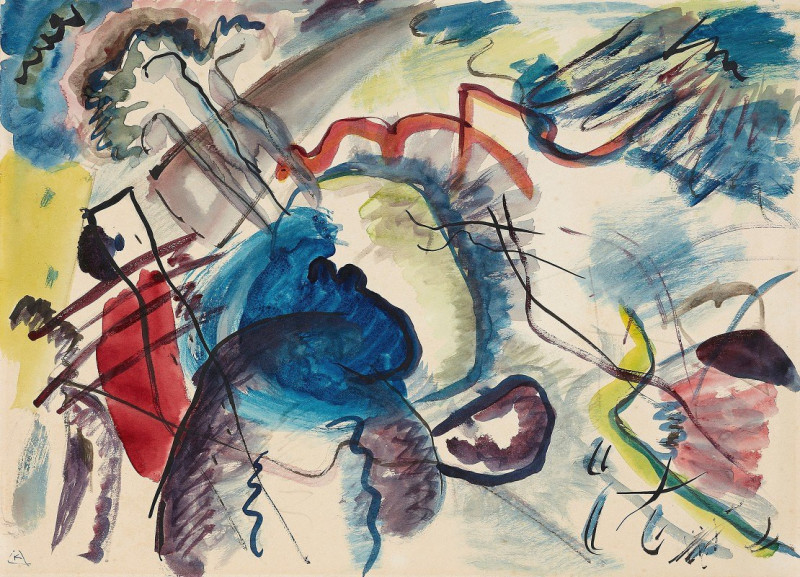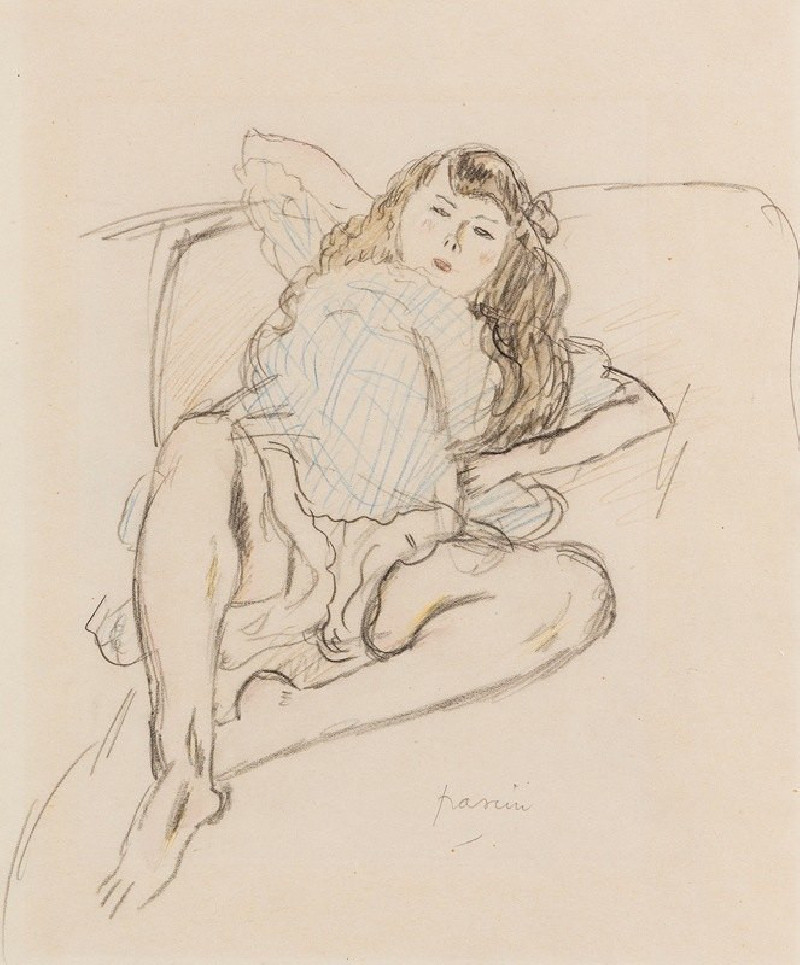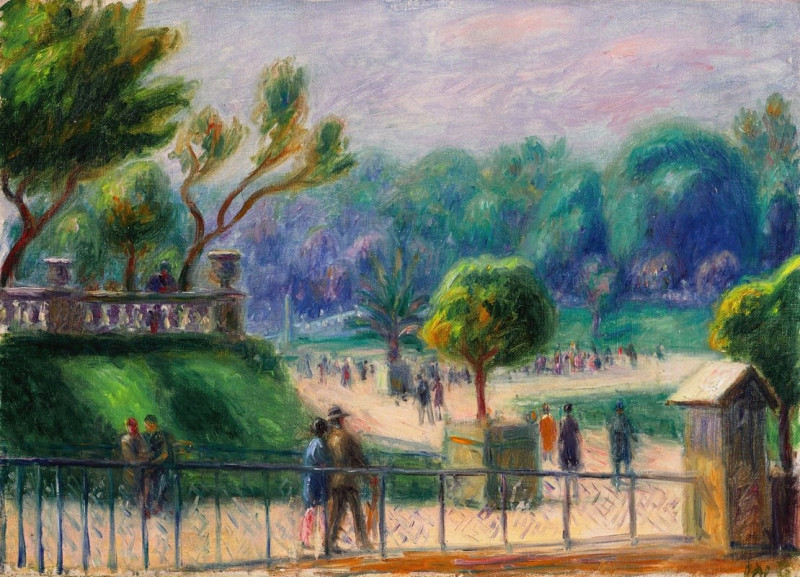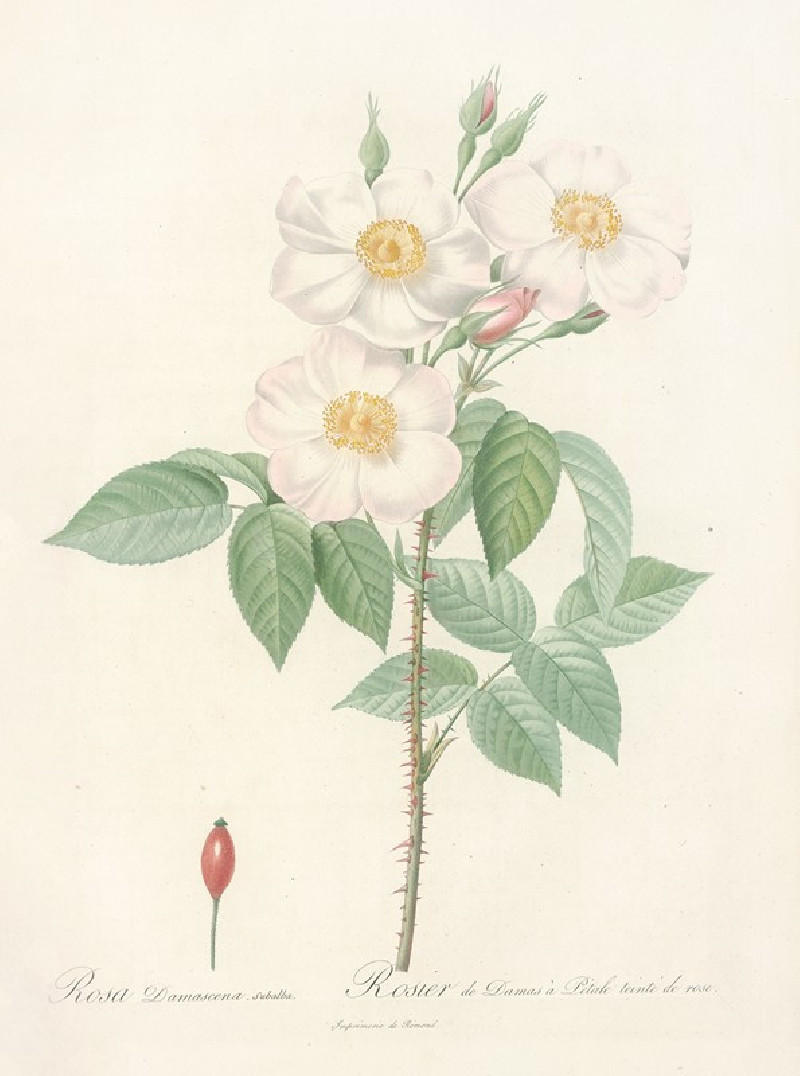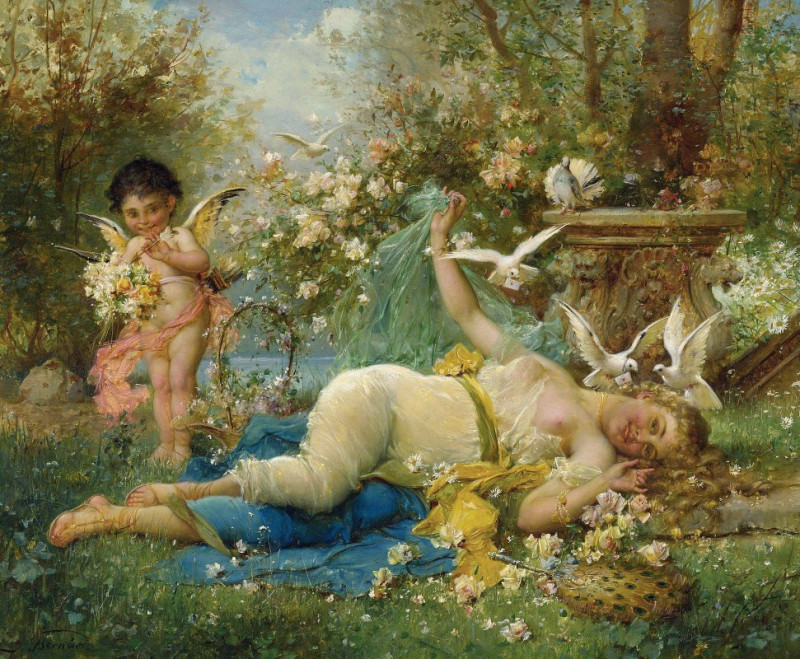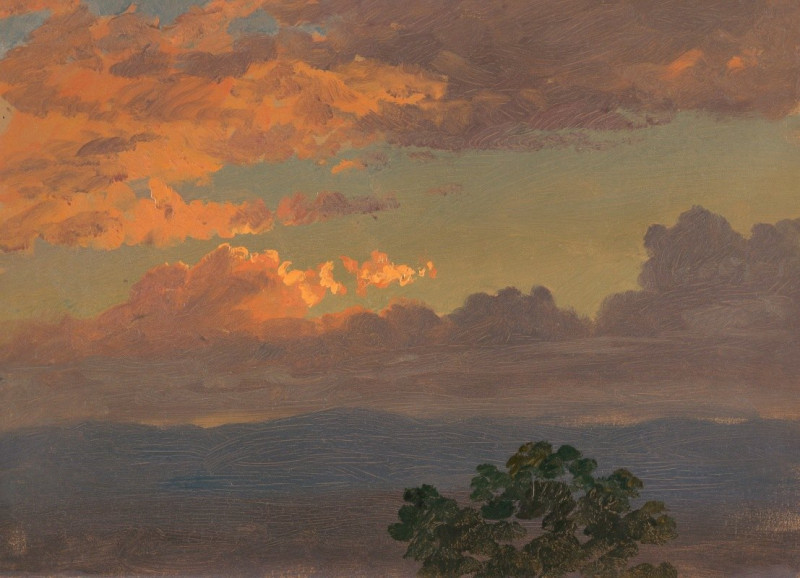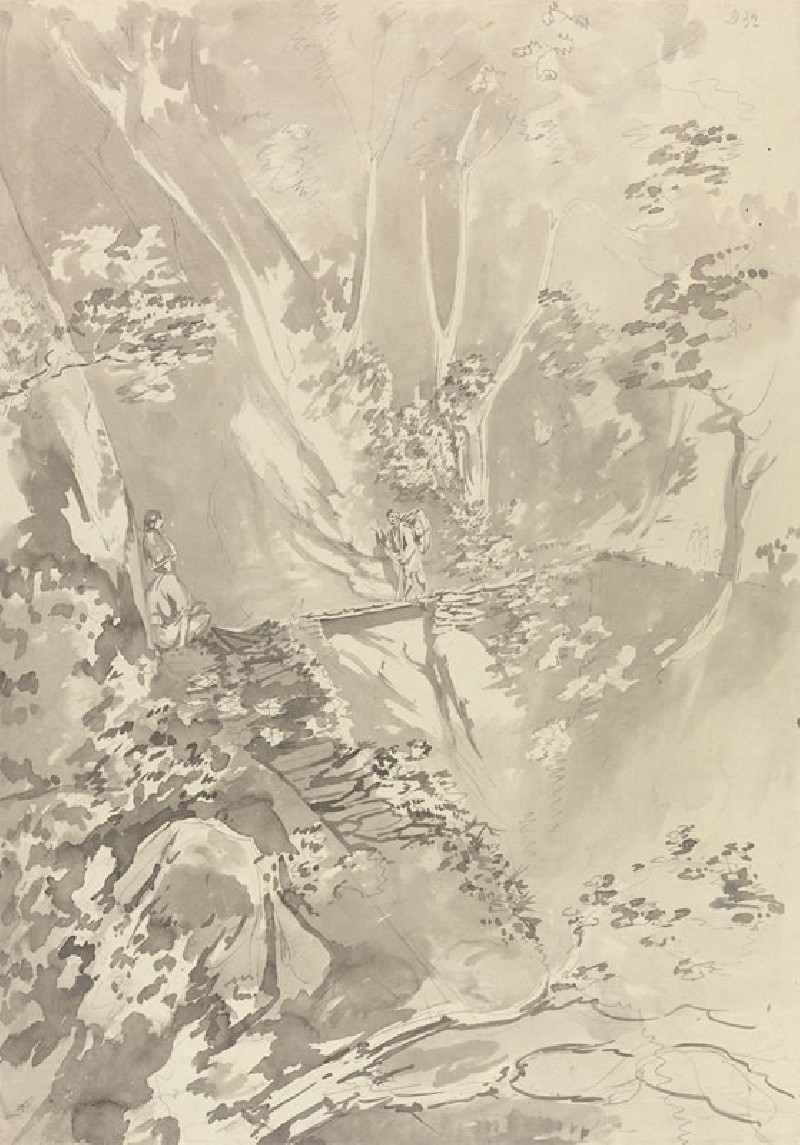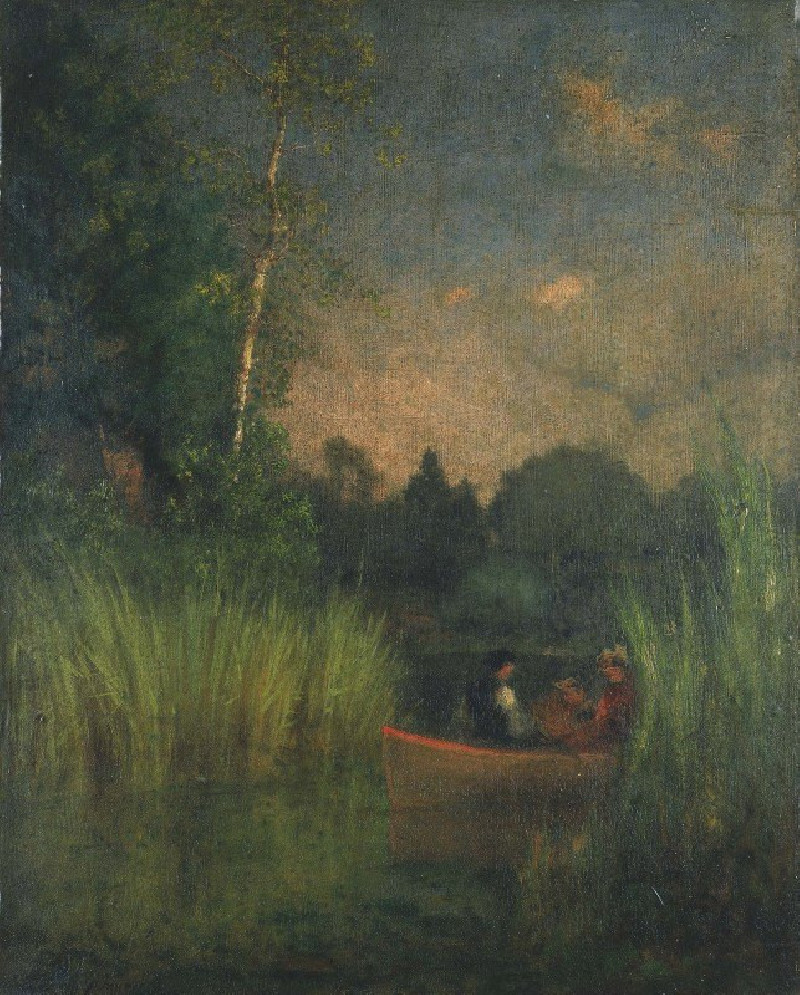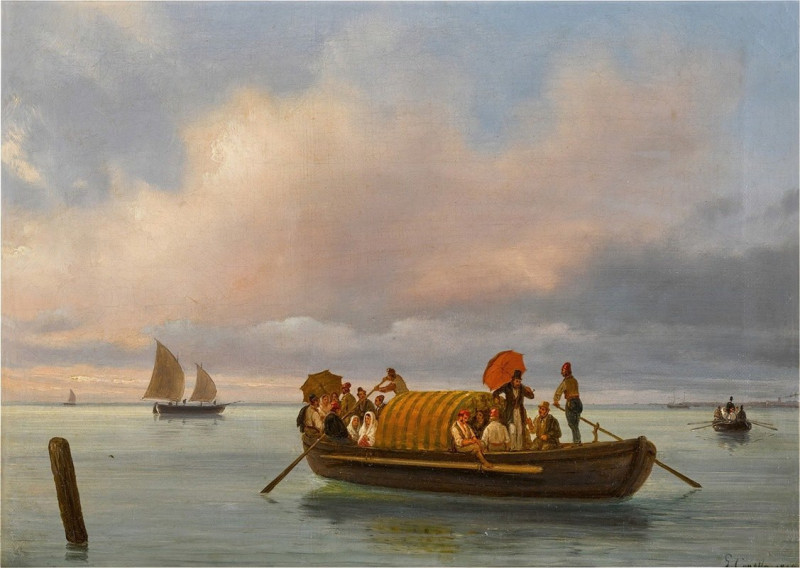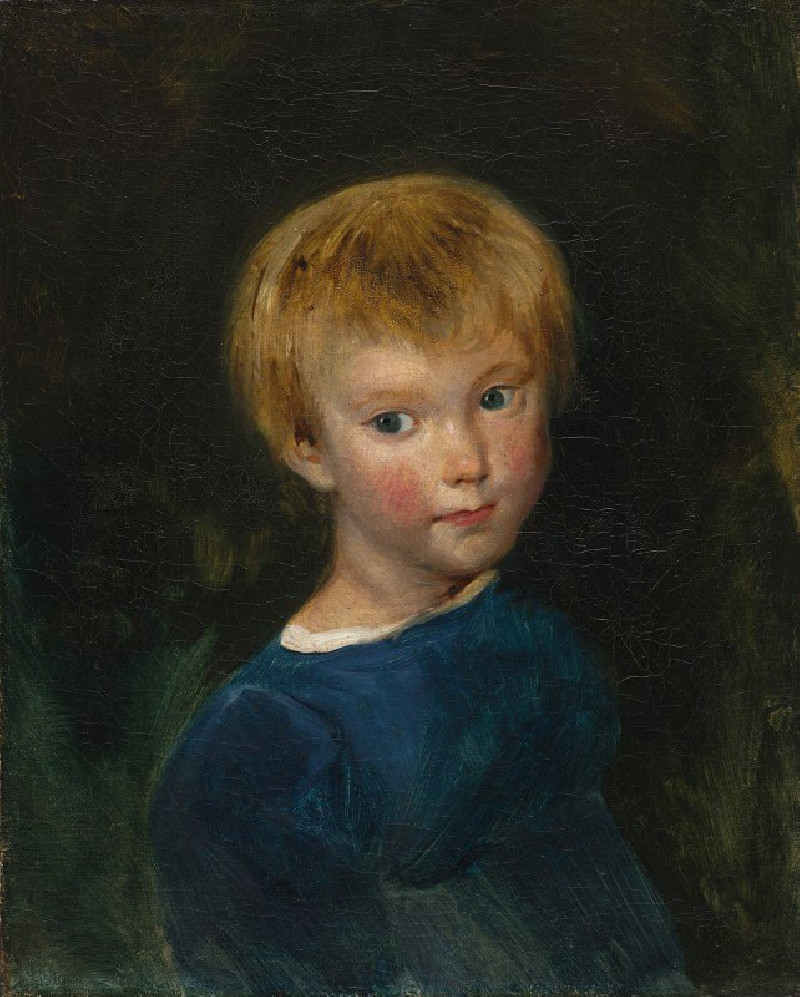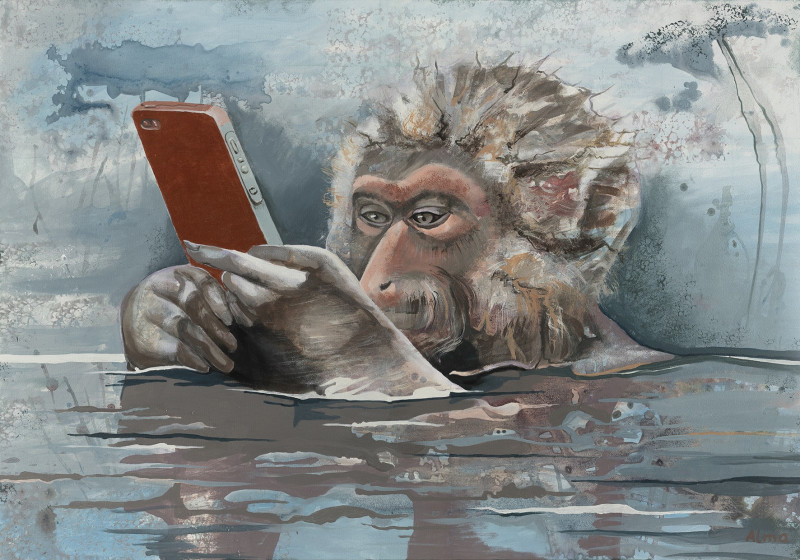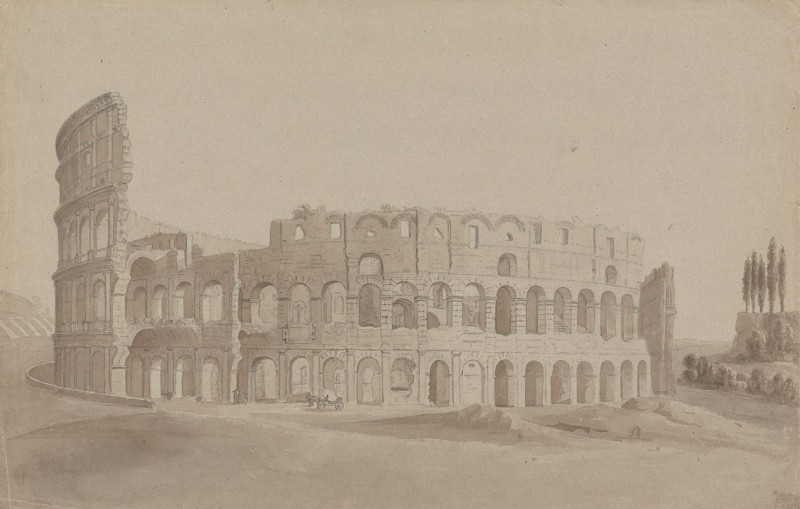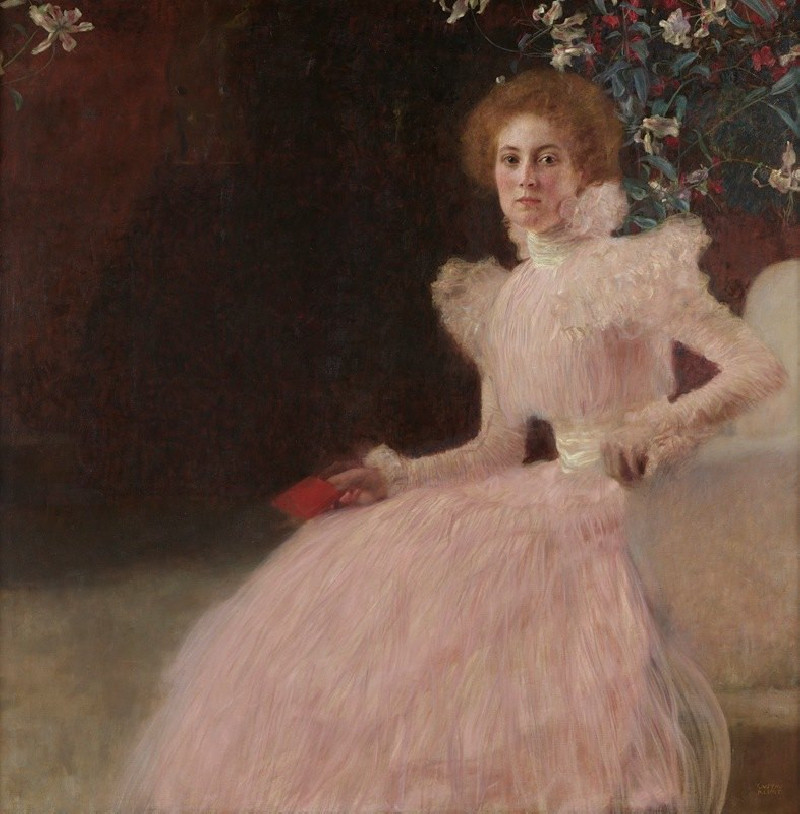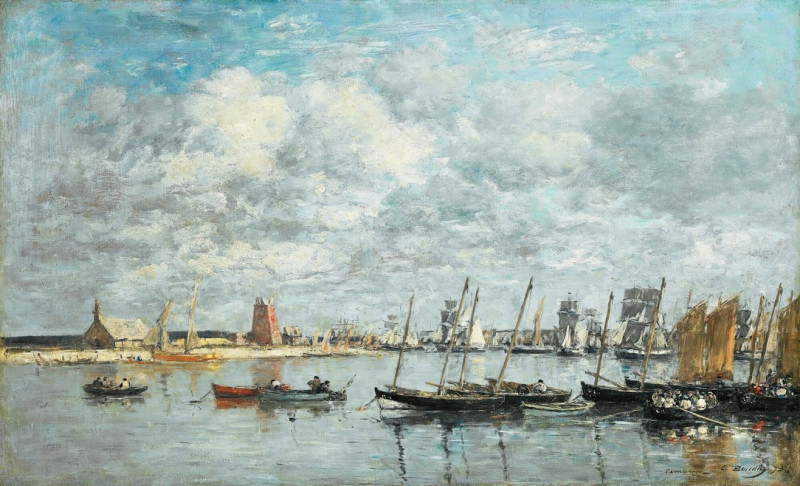Entwurf zu ‘Allerheiligen II (Komposition mit Heiligen)’ (1911)
Technique: Giclée quality print
Recommended by our customers
More about this artwork
This vibrant artwork by Wassily Kandinsky, titled "Entwurf zu ‘Allerheiligen II (Komposition mit Heiligen)’" from 1911, is a splendid representation of his early exploration into abstraction and expressionism. Kandinsky masterfully uses a blend of abstract forms and figures, vivid colors, and fluid lines to convey spiritual and mystical themes, a recurring subject in his work.The composition intriguingly combines both semi-recognizable figures and completely abstract elements. On the left side of the painting, evocative of traditional iconography, you can see figures that resemble saints or spiritual beings. These figures are adorned with halos, suggesting their sanctity, and are portrayed in vivid colors against a backdrop of swirling, undefined shapes and powerful color contrasts. These colorful and religious figures seem to interact with or emerge from the abstract environment surrounding them, creating a dynamic and visually captivating scene.The use of bright, primary colors alongside softer pastels creates layers of depth, while various symbols, like circles and linear gestures, add to the overall mystical atmosphere.
Delivery
Returns
Wassily Wassilyevich Kandinsky was a Russian painter and art theorist. Kandinsky is generally credited as the pioneer of abstract art. Born in Moscow, Kandinsky spent his childhood in Odessa, where he graduated at Grekov Odessa Art school. He enrolled at the University of Moscow, studying law and economics. Successful in his profession—he was offered a professorship (chair of Roman Law) at the University of Dorpat today Tartu, Estonia)—Kandinsky began painting studies (life-drawing, sketching and anatomy) at the age of 30.

